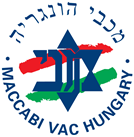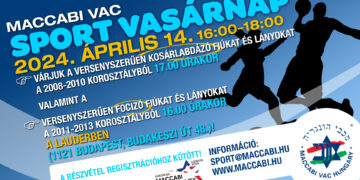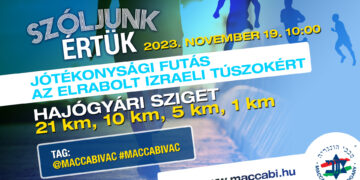Fredy Hirsch: a Maccabi martyr during the Shoah
Kfar Maccabiah, April 2023
ניסן, תשפ”ד
| Dear Friends,
The sheer scope of the massacre of 6 million of our brothers and sisters in the Shoah is absolutely incomprehensible and almost immeasurable for any human being. How can one summarize the infinite quantity of hopes and hopelessness, dreams and frustrations, action and inaction, joys and sadness that characterize the life of all human being… of 6 million lives cut off by the most absurd of hatreds? How does one calculate the proportions of loss, of the universe emptied and left devastated, of whole Jewish communities obliterated by Nazi bestiality? How can we internalize that 1 of every 3 Jews in the world – the overwhelming majority of the Jewish community of the continent of Europe and the Mediterranean basin – vanished into the odious apparatus of the Germans and their multiplicity of accomplices and collaborators in the space of a mere 6 years?
The simple answer to these unbearable questions is that there is no way to understand, conceive or imagine, even minimally, the monstrosity that those numbers represent – 6 million children, young people, adults and elderly men and women, brutally assassinated.
How to honor, then, in this Yom HaShoah, this Holocaust Day, so many souls, so many spirits, so many hearts and minds that knew no mercy nor have any tomb? The only possibility, perhaps, of grasping this immensity is to learn the story of one person who succumbed at the hands of the assassins, as in the case of that little girl and grand heroine, Anne Frank, and then to multiply the story by many millions in our minds.
Maccabi counted many tens of thousands of members in the lands covered by the dark shadow of the Shoah. Many fought in the clandestine resistance; but most, together with their families,
became prisoners in the ghettos and death camps. One extraordinary singular story is that of a young Maccabi leader, an educator who gave his life for his young pupils, and who accompanied them right to the moment of his and their deaths: Alfred (Fredy) Hirsch, of blessed memory. Fredy was as great, as important, as exemplary to non-formal Jewish-Zionist education, as Janusz Korczak was to formal education in the first half of the 20th Century. Both gave everything for their students – and both had the same tragic fate, in different death camps (Auschwitz and Treblinka).
Fredy was born and lived in Aachen, Germany, where he took his first steps at Maccabi Tzair. Moving to Frankfurt, his Maccabi leadership grew, becoming a recognized figure among the city’s Jewish youth. With the Nuremberg anti-Semitic racial laws of Sept. 15 1935, Fredy decided to immigrate to Czechoslovakia, living in Brno and leading the Maccabi Tzair movement there, working with the youth, teaching sports and preparing jalutzim (pioneers) for aliyah in the “Promised Land”. Fredy organized Czech Maccabi Games, leading all its aspects. In 1939 Fredy moved to Prague. He put much effort into working with youth, teaching sports and preparing chalutzim (pioneers) for aliyah to the “Promised Land”. Until 1940, he organised scouting summer camps in the village of Bezpráví on the river Orlice. Hirsch was the leader of a group of 12 – 14 year-old boys called “Havlagah”. In October 1939, 6 months after German troops annexed what little of Czechoslovakia had remained independent after the infamous Munich agreement, this group miraculously left for Denmark, and then moved on to Palestine a year later. |
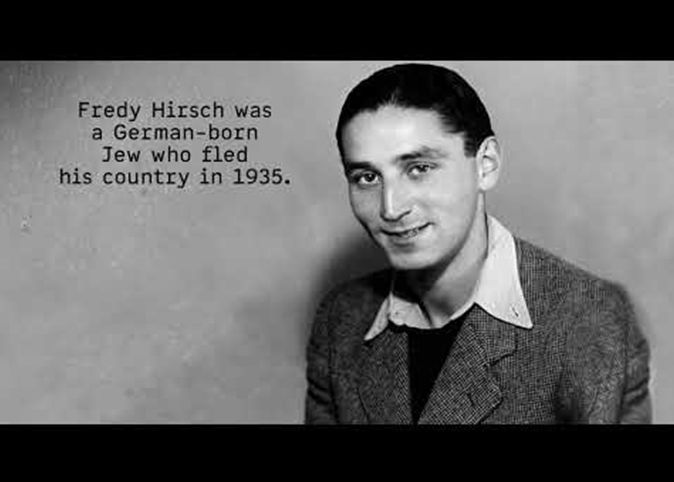
| Numerous anti-Jewish measures and bans were decreed when Nazi Germany occupied the Czech Republic, and the place where Fredy worked was one of the few outdoor facilities where Jewish children could still exercise and play games. He organised sports, competitions, campfires and theatre performances for hundreds of children, trying to spread ideas of community, responsibility and fitness in the midst of the dark evil.
The Prague Jewish community was deported to the Terezin Ghetto/Concentration Camp (Theresienstadt) on December 4, 1941. Along with 22 other Jewish Community employees; Fredy became “Aufbaukommando II”, whose task was to organise daily life in what was to become a massive ghetto. From the very beginning of the camp, children were concentrated in special rooms, separated from their parents; these later developed into 11 “kinderheims” (children’s homes) where they were cared for by Jewish educators and teachers. They had a rough, stony field, and there they hosted the “Terezin Maccabi Games” for Therezienstadt inmates in May 1943.
In the summer of 1943, a Transport of 12,000 Jewish children from the liquidated Białystok ghetto arrived in Terezin; they were kept isolated from the other prisoners. All communication with them was strictly prohibited, lest the other prisoners realize that death was the end the Germans intended for all Jews. Nevertheless, Fredy attempted to establish some contact with their teacher. He was caught, and his punishment was to be included in the Transport that left Terezin on 6 September with 5000 other prisoners for the “family camp” at Auschwitz-Birkenau.
Fredy became the leader of the Children’s Block, whose amenities differed from those found in the remaining Birkenau prisoner barracks: instead of 3-tier bunks, the rooms were filled with small chairs (the children spent only their days here, returning to their parents at night). Barrack walls were decorated inside with drawings of the Snow White and the 7 Dwarves, Eskimos, fairies and flowers. The children were held for most of the time in Block 31, where they ate their meagre meals. While children suffered from hunger, none starved to death. The block became for the children a kind of safe haven from the ever-present terror of SS officers and guards. After further Transports arrived in December, the block was overcrowded with around 500 children, and Hirsch succeeded in bargaining another barrack to accommodate for the children.
Improvised educational activities took place in secret in the children’s block, with the children divided into smaller groups according to age. Teachers narrated the contents of books they remembered, taught geography, history, played games and sang together. At the turn of 1943 and 1944, the children also rehearsed and performed Snow White and the 7 Dwarves.
In February 1944 Fredy Hirsch was summoned by members of the Auschwitz camp resistance movement to join them. On the personal card of each prisoner who had arrived with Fredy at Auschwitz – including “his children” – the term “Sonderbehandlung” appeared, which implied death in the gas chambers. Thanks to his natural authority among the prisoners, the members of the resistance movement saw in Fredy a potential leader for an eventual rebellion. A rebellion meant certain death for most of the prisoners in the family camp, and certainly the death of all the children; on the other hand, it provided the opportunity to kill several SS men, and a small hope for the escape of a few prisoners. On the morning of March 8, Fredy was found dead. His body, together with the remains of 3,792 murdered prisoners from the Terezin family camp, was burned in the Birkenau crematorium in the evening of that very same day. “Fredy’s children” met the same tragic fate: they were killed by the Nazi German beast immediately after. The September children’s transport was murdered. Fredy could not save his children… but he lived his whole life promoting his Maccabi ideology: Judaism and Zionism; strength and independence; sport and health.
In an era when our People have and independent State and are completely sovereign over ourselves and our homeland, the deeply painful sense of utter impotence and desperation that overtook so many in the devastation of the Shoah is a ghost of the past, but it is an ever-present component of the horror with which we regard those times. In the act of honoring those men and women of whom the Nazis wanted to erase all memory, one of Hitler’s most desired objectives, we retain their memories as a living presence and assume the enormous, almost overwhelming, but sacred responsibility to continue their legacies, paths, examples, and realizing by our actions, at least some of their hopes and aspirations.
May the lives of the Six Million be always remembered, blessed, honored and perpetuated by our deeds, for we are their living memorial.
Chazak ve’ematz!
Rabbi Carlos A. Tapiero Deputy CEO & Director of Education Maccabi World Union |
